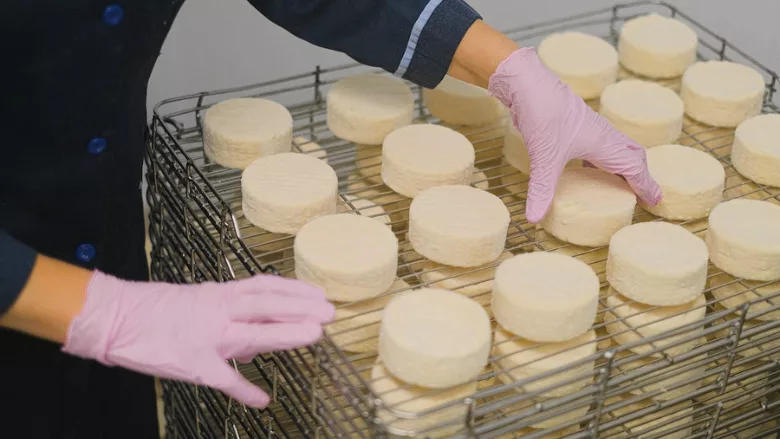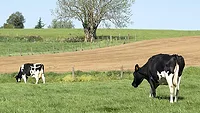FAO, WHO Report on STEC Controls for Meat and Dairy, Listeria in RTE Foods

Credit: Anna Shvets (shvetsa) via Pexels
The Food and Agriculture Organization of the United Nations (FAO) recently published two reports: “Control Measures for Shiga Toxin-Producing Escherichia Coli (STEC) Associated with Meat and Dairy Products” and “Listeria monocytogenes in Ready-to-Eat (RTE) Foods: Attribution, Characterization, and Monitoring.” The reports summarize the key takeaways from two Joint FAO and World Health Organization (WHO) Expert Meetings on Microbiological Risk Assessment (JERMA) sessions.
STEC Control Measures for Meat and Dairy
The meeting on which the report “Control Measures for STEC Associated with Meat and Dairy Products” is based took place virtually on June 1–26, 2020 to review relevant measures for pre- and post-harvest control of STEC in animals and foods of animal origins. The meeting was convened to support the Codex Alimentarius Commission’s (CAC’s) Committee on Food Hygiene in the development of guidelines for the control of STEC in beef, raw milk and cheeses produced from raw milk, leafy greens, and sprouts.
The meeting involved the review of interventions for the control of STEC in cattle, raw beef, raw milk, and raw milk cheeses manufactured from cow’s milk, as well as an evaluation of the available evidence for other small ruminants (goat, sheep), swine, and other animals (reindeer, yak, camelids, bison, and buffalo). The expert committee also scored the degree of scientific support that exists for the effectiveness of STEC control interventions.
Many approaches for controlling STEC in meat production and processing are based on good agricultural practices (GAPs) and good hygiene practice (GHPs). Specific interventions discussed during the JERMA session that were rated with a “medium” or “high” level of confidence to impact STEC prevalence are as follows:
- Certain on-farm approaches such as cattle demography practices, closed cattle herds, lower animal density, good environmental hygiene, variation in diet composition in regard to forage-to-concentrate ratio, the use of certain feed types and grain processing techniques, probiotic and sodium chlorate feed additives, and good udder hygiene in dairy animals
- Certain slaughter and dressing practices including fecal management, trimming, steam vacuuming, hot water washing followed by chilling, steam pasteurization, and use of organic acids
- Physical interventions during post-processing, such as air drying heat treatment, surface trimming, dry-chilled aging, high-pressure processing (HPP), irradiation, irradiation with packaging or organic acid
- Lactic acid and other chemical treatments during processing
- Various post-processing treatment combinations
- For raw milk and raw milk cheeses, HPP and irradiation were found to be effective processing control strategies, as well as lactic acid dry salting; curd cooking, brining, and pressing; acidification; and ripening for certain cheeses.
Additionally, the efficacy of on-farm vaccination in controlling STEC fecal shedding was highly variable depending on the type of vaccine and dosages administered.
Limitations acknowledged in the report include surrogate E. coli bacteria often being used to substitute STEC for in-plant studies, and many studies focusing on the impact of an individual control measure at a specific stage in the food chain, rather than in a broader supply chain or food safety context. The report also recognized that, with advances in analytical methods such as the increasing use of molecular tools, some STEC control measures and interventions may need to be reevaluated in the future.
L. monocytogenes in RTE Foods
Looking for quick answers on food safety topics?
Try Ask FSM, our new smart AI search tool.
Ask FSM →
The meeting on which the report “L. monocytogenes in RTE Foods: Attribution, Characterization, and Monitoring” was based took place virtually on October 20–November 6, 2020 to review recent data on L. monocytogenes and determine the need to modify, update, or develop new risk assessment models and tools for the pathogen. The meeting considered data submitted by experts, past JERMA documentation, a review of current national L. monocytogenes surveillance programs, a review of current microbiological and laboratory methods for L. monocytogenes, and an update on the virulence markers for L. monocytogenes.
The expert group concluded that the development and implementation of effective surveillance systems are critical in addressing the control of L. monocytogenes. The report urges that the use of approved standardized laboratory methods for culturing and isolating strains should be the foundation of such systems so that human, food, and environmental isolates can be further characterized and inventoried. The use of whole genome sequencing (WGS), chromogenic media, and metagenomics analysis were encouraged.
The report notes that new information has emerged on L. monocytogenes strain variants, which differ in their virulence and environmental tolerance. Based on a panel of specific genes, the expert group proposed a virulence ranking of L. monocytogenes relevant to invasive listeriosis.
Additionally, the report stated that, based on scientific evidence, the majority of the effort to mitigate L. monocytogenes should be focused on proactive management and control by implementing a comprehensive food safety management system (FSMS). Particularly, businesses should employ a risk-based approach to process control, environmental monitoring, and final product testing.
Furthermore, the report recognized that L. monocytogenes disproportionally affects certain highly susceptible populations, and recommends that future risk assessments review groupings of susceptible people, based on physiological risks and other socio-economic factors.
The expert group also identified several critical gaps in the current FAO and WHO risk assessment model, and agreed that updating the model to more broadly focus on a “farm-to-fork” lens would be valuable for informing risk analysis strategies, including in low- and middle-income countries. For future risk assessments, the expert group recommends focusing on specific types of produce: leafy greens, cantaloupe and rock melons, and frozen vegetables. Additionally, the expert group suggests updating the risk assessment done for RTE seafood that allows for the growth of L. monocytogenes.









